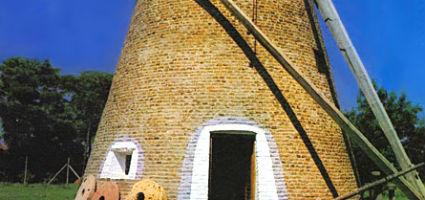2024. November 22. Friday
The Exhibition Ward of the Csabai Homestead and the History of Grain - Békéscsaba
 |
Address: 5600, Békéscsaba Gyulai út 65.
Phone number: (66) 441-026
E-mail: mmm@bmmi.hu
Opening hours: 01.04-31.10.: Tue-Sat 9-17
|
Museum tickets, service costs:
|
Ticket for adults
|
300 HUF
|
|
|
Ticket for students
(under 26 years of age)
|
150 HUF
|
|
|
Ticket for pensioners
(under 70 years of age)
|
150 HUF
|
The windmill was built from 1855 to 1860 by a peasant man named Dobsa. It was built of large bricks burned in the region using wood from Maros and Száraz-ér. Two pairs of millstones were brought from Sárospatak to Csókáspuszta. Several people owned the mill from 1890 who lived in the homestead on 12 acres near the mill since the tenth collected in the mill bought low income.
The number of homesteads from where the crop was brought here was around a hundred. The mill grained about 150-160 tone of crop a year. The season lasted from September to March. Good wind that turned the sails evenly came in September and October. The wind from May to August was only good for mastication.
During the war, in 1944-1945 flour for bread was also grinded in the grate. The wheat was screened out and water was put on it. The wheat was half grinded and housewives drizzled it at home to separate flour from bran. It was because the mill did not have a drizzle.
The museum was moved to the territory of the Békéscsaba Crop Museum in 1978.
Except from Cs. Szabó István: Békéscsaba, Crop Museum - TKM 308.)
The number of homesteads from where the crop was brought here was around a hundred. The mill grained about 150-160 tone of crop a year. The season lasted from September to March. Good wind that turned the sails evenly came in September and October. The wind from May to August was only good for mastication.
During the war, in 1944-1945 flour for bread was also grinded in the grate. The wheat was screened out and water was put on it. The wheat was half grinded and housewives drizzled it at home to separate flour from bran. It was because the mill did not have a drizzle.
The museum was moved to the territory of the Békéscsaba Crop Museum in 1978.
Except from Cs. Szabó István: Békéscsaba, Crop Museum - TKM 308.)